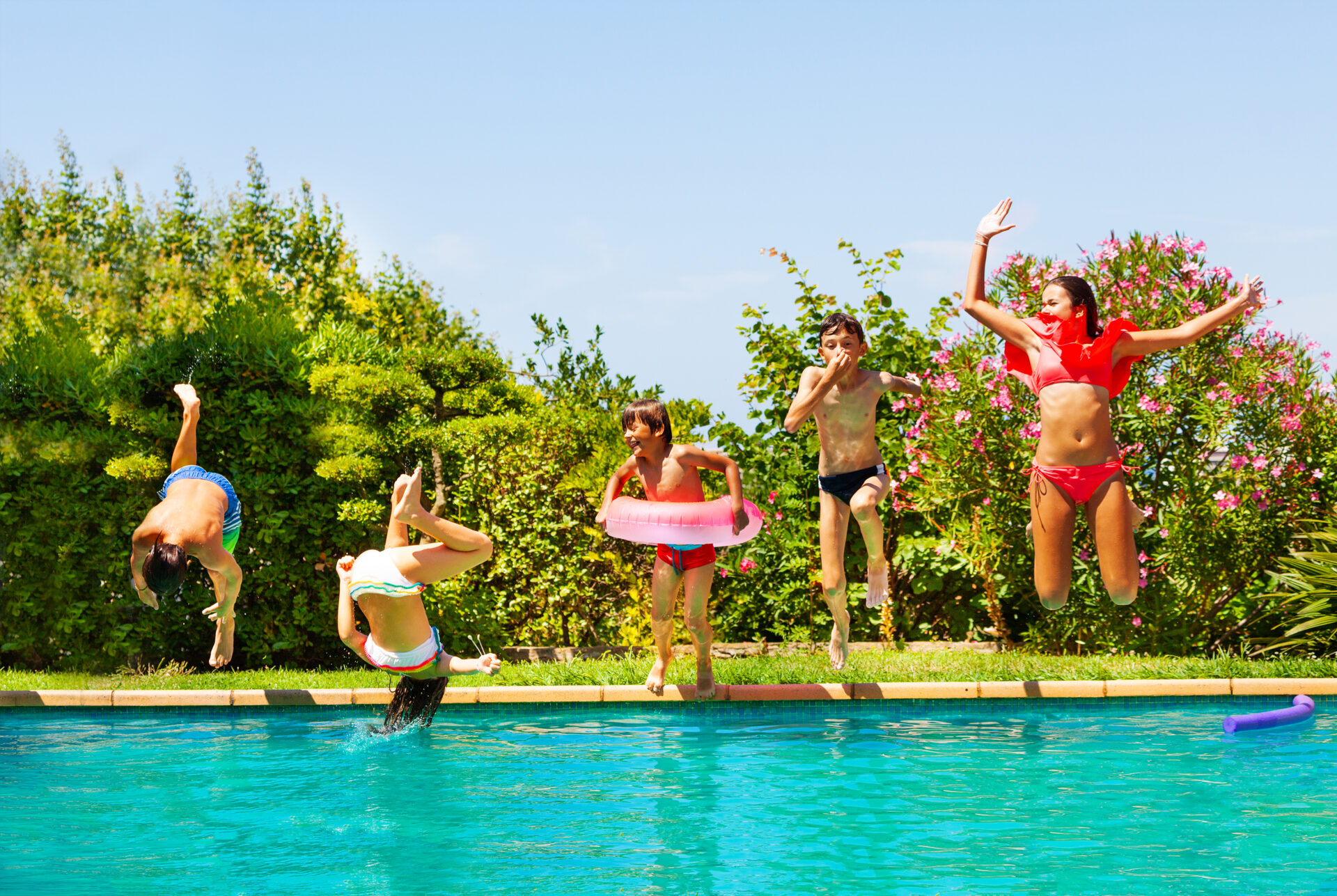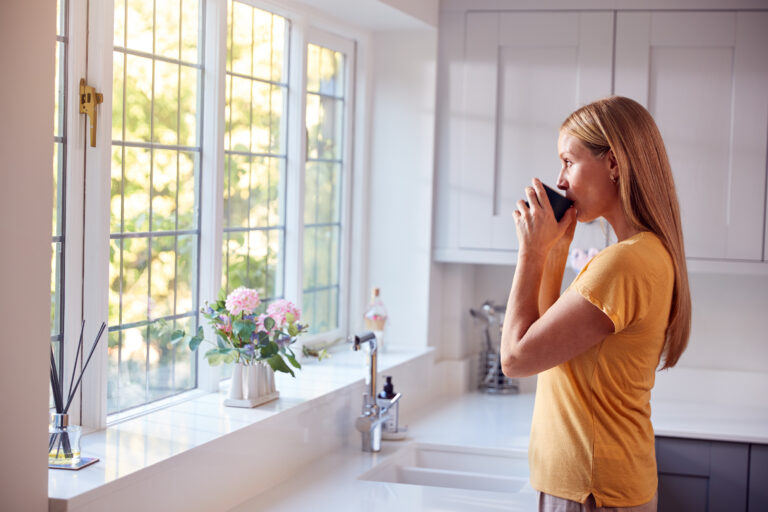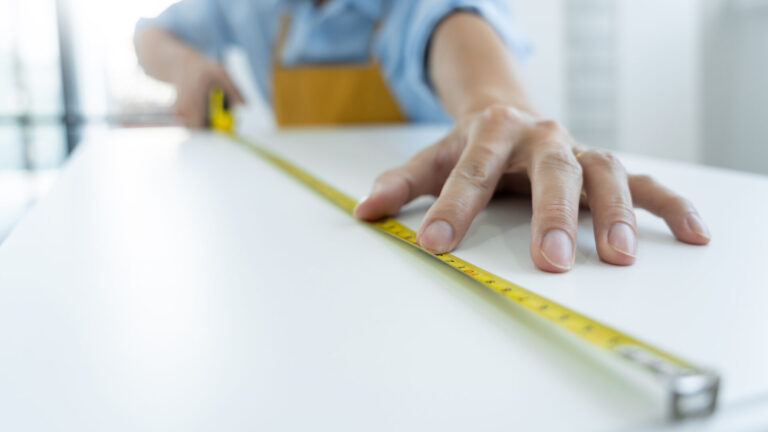Swimming Pool Installation Costs (+ Rent Out Your Pool!)
With many people staying close to home due to the pandemic, sales of swimming pools have surged and many pool companies are now taking orders for 2022.
As many Canadians opted to stay close to home this summer, the sale of swimming pools surged. Many pool installers and sales companies are now taking orders for delivery well into next year!
5 Things to Know Before Installing an Inground Pool
If you want to spend your money wisely on an inground pool installation, then consider your options and obligations before breaking ground.
When it comes to the cost of installing an inground pool, a general rule of thumb suggests that the overall cost is typically 2 to 2.5x more than the cost of the pool itself. That’s because there’s much more to the installation of an inground pool than digging a hole and filling it with water.
Typical inground pool installations will require:
- Digging the hole and installing the pool
- Outdoor lighting, landscaping, pathways and fencing, and additional outdoor electrical outlets
- Ongoing pool requirements: pool cover, water test kits
- Potential requirements include: decks, patios, privacy screens, outdoor sound system, shade structure, patio furniture, equipment shed, storage cabinet, pool toys
To spend your budget wisely, consider these five factors:
#1. Pick Your Perfect Pool Type
There are three main types of in-ground pools:
- concrete
- vinyl-lined
- fiberglass.
You can also find steel- or aluminum-walled pools, but these are not very popular in most areas of North America.
Concrete pools are truly custom-built and can be formed to virtually any size, shape or depth. These pools are often called Gunite or Shotcrete pools because concrete is shot from a gun onto steel-reinforced walls. Once the concrete cures, the pool is plastered, painted and finished with a textured surface, or tiled.
It takes longer to install a concrete pool than any other kind generally between three and 12 weeks but it’s the strongest, most durable type of pool. In fact, there are many concrete pools still in use today that are well over 50 years old. And, unlike other types of in-ground pool, existing concrete pools can be remodeled, enlarged and updated.
Vinyl pools are made from a preformed flexible liner that fits into the excavated hole. It’s secured to a reinforced frame made of steel, aluminum or non-corrosive polymer. A vast majority of vinyl pools are rectangular, but L-shaped and freeform liners are available from some manufacturers. Construction time for building a vinyl-lined pool is generally one to three weeks.
When considering a vinyl pool, be aware that pool toys , pets and sharp objects can puncture the liner. And while liners can be repaired, it’s best to choose one that’s at least 20 to 30mm (about ¾ to 1 in.) thick.
Fiberglass pools are factory-molded into one giant bowl, which is set into the excavated hole by a crane. As a result, fiberglass pools can be installed much faster than other pool types. In some cases, as little as three days. Fiberglass pools have a super-smooth gel coat finish that’s extremely durable and stain resistant. And unlike concrete pools, fiberglass is nonporous, so it uses fewer pool chemicals and harbors less algae.
However, fiberglass pools come in fewer sizes and shapes than concrete or vinyl pools, which might be an issue if you’ve got a small or uniquely shaped backyard. And the huge molded pool must be shipped via truck, which might be forced to take a long, circuitous route to your house. That’s because the transportation of oversized loads is regulated by individual states, and truckers often have to drive around several states to deliver a fiberglass pool.
And once the pool arrives, there must be adequate space in your yard for the crane to drive close to the site and maneuver the molded shell into the excavated hole. Note that access is sometimes only available through a neighboring property. Be sure to check with the trucking company or pool contractor to confirm that there’s enough space for the crane to operate.
Best Inground Pool Type for Colder Climates
The flexibility of fiberglass and vinyl liners makes them ideal for cold climates where freezing and thawing cycles can damage a rigid concrete structure.
In Canada, vinyl pools are most widely available, while fibreglass is a more popular option in hotter states in the US.
If you’re not sure which type of pool to get, rely on the expertise of local pool contractors. If they’re primarily installing one type of pool, there’s probably a very good reason why — quite often it’s the best option for the local climate and soil conditions.
#2. Cost Comparisons
It’s impossible to predict how much an inground pool will actually cost, since price varies dramatically based on conditions and build.
Generally speaking, however, concrete pools are the most expensive, followed closely by vinyl-lined pools, and then fiberglass. Keep in mind, even a high-end fiberglass pool with all the bells and whistles can cost more than a barebones concrete pool.
To give an example of costs, a Toronto homeowner can expect to pay $40,000 or more for a simple rectangular 20- x 40-ft. concrete pool. This price tag includes the installation of the pool itself as well as the filtration system, initial water fill-up, underwater lights and stone coping around the pool’s edge. It does not include the cost of the fencing, landscaping, decking and other pool-related items.
Remember, most homeowners will spend about twice the pool cost to complete their swimming pool project. That means this Toronto homeowner will end up spending closer to $80,000 once that inground pool is installed and ready to use.
One way to reduce costs is to schedule a pool installation during the off season. Many contractors offer discounts for pools built during the off-season when business is slow. Be aware, however, that a slow season may be entirely different as pandemic restrictions persist.
#3. Stay on the Right Side of the Bylaws
Building and zoning rules differ from city to city, but ordinarily you must satisfy certain setback distances from the pool to property lines, septic tanks, wells, sewer lines, and wetlands.
There are also codes concerning pool barriers and gate hardware.These bylaw rules require you to build a perimeter wall or fence — and this will add costs to your inground pool build. In most jurisdictions, a fence or barrier must be at least 4 feet tall and equipped with self-closing, self-latching gates. Fence boards or balusters must not be spaced more than 4 inches apart. Chain-link fences must have openings no larger than 1-1/4 inches wide.
For an extra level of protection, especially if you’ve got young children or grandchildren, consider mounting alarms on all house doors and gates leading to the pool, and installing a power safety cover over the pool. For a list of specific rules and restrictions, contact the local building department.
#4. Picking the Proper Site
Picking the best place for your pool is as important as the pool itself. Ideally, you’ll want to install a pool in a part of your yard that allows you to keep an eye on swimmers even while you’re indoors. Here are some other pool-placement tips to consider:
High and Dry: A pool should not sit in a low-lying area, which could result in the pool flooding with mud and debris during periods of heavy rain or severe storms.
Look Out Above and Below: The pool shouldn’t be located beneath overhead telephone or electrical wires, or directly over buried sewer lines, septic systems or electrical cables.
Capture the Sun: Take advantage of free solar energy by choosing a pool location that’s open to the sun and well away from any trees. Such a location will not only warm up the water, it’ll also reduce the number of leaves that drop into the pool.
Block Breezes: Building a pool in a windy location greatly increases water evaporation, which means you’ll have keep adding water to maintain the proper level. Strong winds can also make you feel uncomfortably cool when wet. Create a windbreak by erecting a solid-board fence, or by planting a row of thick shrubs.
#5. Pay for a Clean, Clear System
One key component of an inground pool the pool’s circulation system, which uses both filtration and sanitization to keep the swimming water clean and crystal clear.
Filtration
The filtration pump draws water from the pool’s bottom drains, sends the surface water through an automatic skimmer, and then passes everything through a filter before re-circulating back into the pool.
There are three types of filters commonly used:
- sand
- cartridge
- diatomaceous earth (DE)
All three types of filters work well when properly installed and well maintained, and an experienced contractor will help you decide which filtration system is best for your pool. However, to help you understand how each works, here’s a brief rundown of each type of pool filtration system:
Sand filters are the oldest and most common method of pool-water filtration. They use special filter sand to trap dirt and debris. As the sand particles “load up” or become clogged, they trap smaller and smaller particles. Sand filters are cleaned by backwashing, which involves reversing the water flow through the filter and flushing the dirty water into a waste line.
Cartridge filters use large cylindrical cartridges to screen out dirt. Most pool builders recommend using cartridges with 500 to 600 sq. ft. of filter area. Unlike sand filters, cartridges don’t require backwashing. Instead, you simply rinse them off with a garden hose, a process that uses much less water than backwashing.
Diatomaceous earth (DE) is a porous powder that has microscopic openings, similar to tiny sponges. As water passes through the openings, particles are trapped. DE filters can strain out dirt, dust, algae and some forms of bacteria. When DE filters become dirty, they’re cleaned by backwashing, but use far less water than sand filters. Afterward, fresh DE is added to the filter.
Sanitization
The filtration system is important but it doesn’t negate the need for a chemical sanitizer, which is needed to kill organic contaminants, such as bacteria and algae. (An oxidizer is used to kill both inorganic and organic contaminants.)
At present, there are four approved sanitizers commonly used in swimming pools in North America:
- chlorine
- bromine
- polyhexamethylene biguanide (PHMB)
- salt chlorine
Chlorine is by far the most commonly used pool sanitizer; it’s also an effective oxidizer. When dissolved in water, chlorine releases free-available chlorine, also known as hypochlorous acid. There are different kinds of chlorine sanitizers available, including cal hypo, dichlor, gaseous chlorine, liquid chlorine, lithium hypochlorite and trichlor.
Bromine (hypobromous acid) tablets can also be used as a pool sanitizer. The solid white tablets slowly dissolve to produce free-available bromine, which is also a strong oxidizer.
PHMB is a pool sanitizer that’s used in conjunction with hydrogen peroxide and an algaecide. Hydrogen peroxide is used as an oxidizer.
Salt chlorine generators transforms common table salt into chlorine. While these sanitizers are often dubbed ‘saltwater pools’ this is not the case. Instead, it’s a chlorination system that uses salt rather than chemicals to chlorinate your pool.
High Cost of Pool Ownership: Pool Maintenance Costs
Even when a pool is not in use, it requires ongoing maintenance — and this costs time and money.
The average cost of owning a pool is between $4,000 to $12,000 per year — this includes all factors involved with pool ownership, including the use of electricity, water, and minor repairs.
There are also extra insurance costs — an extra $20 to $50 per month — and there may be an increase in your property taxes.
It’s possible to save a bit — between $500 and $2000 per year — with do-it-yourself maintenance
Still, even with a hands-on pool owner, the costs of pool maintenance can really add up.
Mitigating Pool Maintenance Costs through Swimming Pool Rentals
It costs a lot to maintain a pool. To help curb those costs, you can find a way to make money from your pool.
Enter: The private pool rental.
Swimply: The Airbnb for Pools!
The platform — which is being described as the Airbnb for pool rentals — was launched in the U.S. and Canada three years ago; however, it was only during the COVID-19 pandemic that the platform (and its hosts) began to see massive growth.
The basic idea follows short-term rental principals and goals: If you have a swimming pool to maintain, but don’t use that often, why not rent it out as a way to earn extra income and let others enjoy your pool?
Swimply says many pool owners are able to make thousands of dollars renting out their pools and a top earner made $87,000 in about 10 months.
Listing on Swimply is completely free and takes less than five minutes. A few photos, a brief description, availability, and you’re ready to host. Homeowners with pools can set their own hourly rate and Swimply charges a 15% commission.
The number of pools can drop dramatically, depending on the city you live in, but for those in larger urban areas there could be a great private pool just around the corner!
- About 200 pools to rent by the hour in Ontario
- About 80 are located in the City of Toronto
- Less than 10 pools to rent by the hour in Greater Vancouver
Price of Private Pool Rentals vs Public Pool Swimming
Given the cost of installing and maintaining a pool, many opt for using public facilities and, up until now, this usually meant buying a ticket for a city-run indoor or outdoor pool. But pandemic restrictions meant that many pools were closed for some or all of the year in 2020. For those fortunate enough to live in cities where pools did open, they were surprised to find how different the process and cost was to take a splash.
For example, open-air pools in Vancouver were once filled to capacity based on a first-come, first-in policy. The experience was fantastic: Hot sunny days, outdoor pool facility where you were allowed to bring your own pool toys, an experienced lifeguard, and often with snow-capped mountains as a backdrop.
Prior to the pandemic, a family of four could easily have spent the entire afternoon at an outdoor pool for less than $20; an indoor pool would’ve cost around $16 and given you access to slides and public hot tubs. With pandemic restrictions in place, a family of four still costs less than $20 at an outdoor pool, but you’ll only get 90 minutes of swim time. At indoor pools, you’re restricted to just 45 minutes of splash and play!
Rent a pool through Swimply and expect to pay between $32 to $99 per hour — a great deal if two or more families decide to share the fun and cost! In Toronto, the private pool cost can drop to as little as $20 per her (or rise to as much as $100 per hour). In Calgary — where there is only 1 pool available to rent in August 2021 — expect to pay $70 per hour for a private pool rental. In Edmonton, you should budget $25 to $60 per hour. Compare these costs to the cost of a one-hour private rental of a public pool:
- In Vancouver, it will cost you:
- $983.79 per hour to rent Kitsilano Pool
- $617.04 per hour to rent Second Beach pool
- $369.10 per hour to rent New Brighton Beach pool
- $369.10 per hour to rent Maple Grove pool
- Most other indoor pools: $766.88 per hour
Are Private Pools Safe to Swim In?
The CDC (Centers for Disease Control) said that chlorine pools are a safe place to gather even during the pandemic.
RELATED: Love Tennis? Tennis-court Rentals are Coming!
There is another website called Joyspace that hasn’t launched yet. But soon it will allow people to rent tennis and basketball courts, docked boats and hot tubs. They will also be offered by owners to be rented by the hour.






